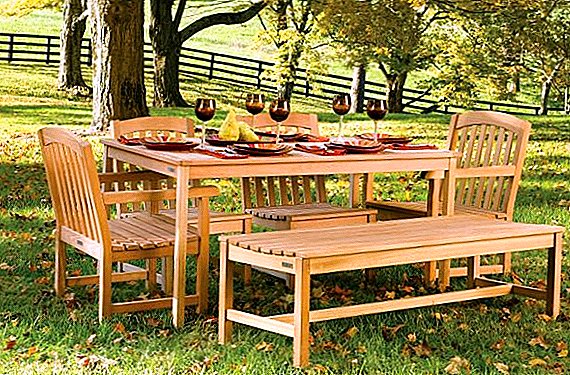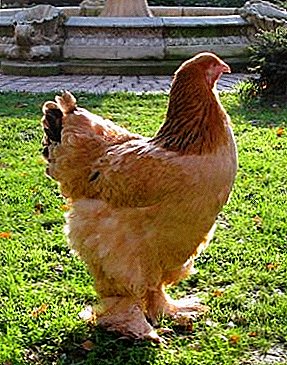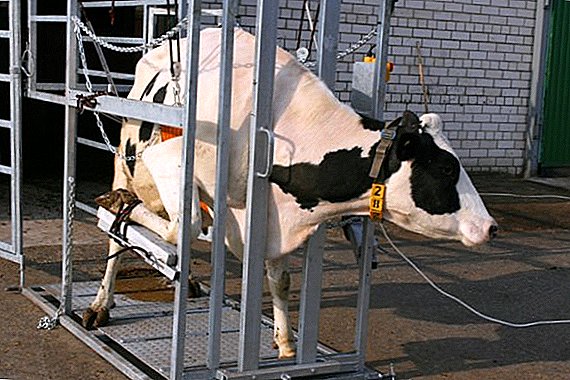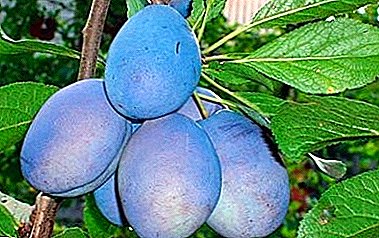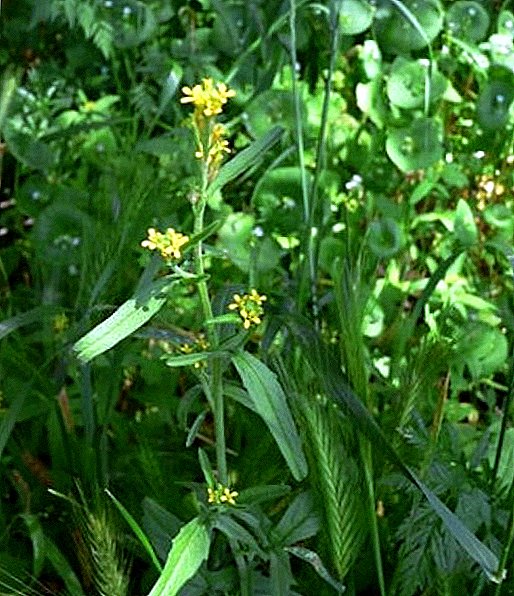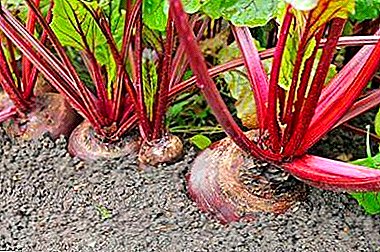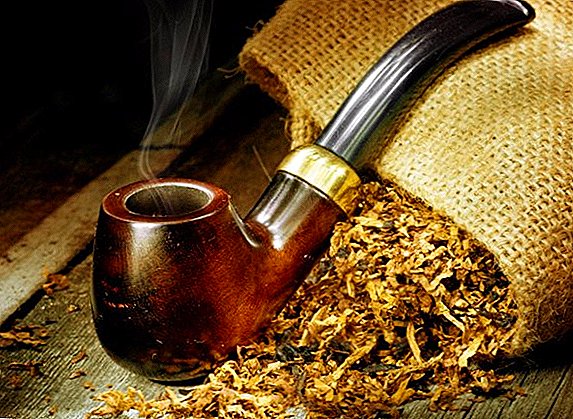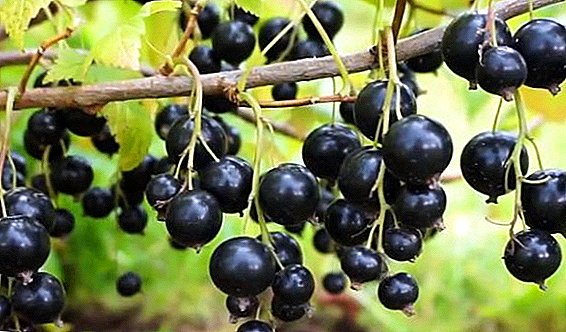 Shrubs black currant can be found on almost every summer cottage. This is due to the taste of berries and medicinal properties of the plant. Every year, gardeners increasingly prefer the variety "Dachnitsa". What is the reason for this, we will understand today: we will get acquainted with the description and characteristics of this variety, as well as the characteristics of planting and care.
Shrubs black currant can be found on almost every summer cottage. This is due to the taste of berries and medicinal properties of the plant. Every year, gardeners increasingly prefer the variety "Dachnitsa". What is the reason for this, we will understand today: we will get acquainted with the description and characteristics of this variety, as well as the characteristics of planting and care.
Selection
As a result crossing varieties "Seedling Blueberries" and "Bredthorp" Scientists from the Research Institute of Horticultural Siberia have introduced a variety of black currants called "Dachnitsa". Its authors are Z. Zotov, T. Ogoltsova, L. Bayanova and S. Knyazev. Culture was entered in the register in 2004 as a plant intended for cultivation in the North-West and Volga-Vyatka regions. 
Description and characteristics
The secret of the popularity of the variety is based on numerous factors: some of them can be learned from the description of the fruits and shrubs of the black currant "Dachnitsa".
Did you know? The method of harvesting currants for the winter is of great importance. In order to preserve almost all the vitamins and minerals that it contains, it is better to freeze the berries. Slightly less, but still more than enough useful substances remain in dried and ground fruits with sugar.
Shrub
"Summer Resident" is a stunted, compact, not thickened bushes, which also have a regular rounded shape. The young shoots are colored bright green, glistening, and have no pubescence. After the plant is woody, the color of the shoots becomes gray-brown, they shine a little less and remain undressed. The leaves of this shrub are small, five-lobed. The sheet plates are painted green with a slight bronze tint. During the flowering period, the bush is decorated with medium-sized pale buds. 
Berries
This currant is large-fruited: the weight of one berry can reach 5 g, and on average each of them weighs 2-3 g. The shape of the fruit is round-oval, they are covered with a thin skin of dark blue color. Berries "Dachnitsa" incredibly sweet, even in the skin is not sour, characteristic of most varieties of black currant. The pulp consistency is very delicate, and its taste is estimated at 4.6 points out of 5. It is also worth noting that the berries are endowed with a pronounced aroma.
Important! 100 g of currant berries in this class contain 9.3% of sugars and 193 mg of ascorbic acid, while the daily requirement for vitamin C of an adult is 75-90 mg. That is, eating a handful of currants, we satisfy the body's need for ascorbic acid for the whole day.
Some features of the variety
This variety of black currant refers to early maturing. Fragrant ripe berries ripen in June, which is already an advantage. Let's look at what else is due to the popularity of the "Dachnitsa".
Disease and pest resistance
The shrub is highly resistant to diseases and pests. He is not afraid of powdery mildew or kidney mite, that is, those typical parasites that very often bring gardeners the inconvenience of growing other black currant varieties. 
Drought resistance and frost resistance
Fruit shrubs poorly tolerate the lack of moisture at a young age. But older plants normally tolerate a lack of water, and it does not affect the yield and quality of berries. Another feature of culture is high resistance to low temperatures.
Important! Frosts up to -32 degrees "Dachnitsa" are not terrible. But the risk of loss of crop or damage to the bush may occur if frost occurs during the flowering period: in this case, experienced gardeners recommend shampooing the bushes.
Ripening period and yield
Shrub begins to bear fruit on 3rd year after landing. "Summer Resident" is self-fruited, but if you want the crop to be consistently rich, you need to plant 2-3 other black currant varieties on the site, which will act as a pollinator.
It should be noted that the crop yields medium in volume but stable yields. The age of 5-8 years is considered to be the peak of a plant's yield: at that time, an average of 1.5 kg of currants is collected from one bush. And if you have a large plantation, for example, in 1 hectare, you can collect up to 9 tons of berries. 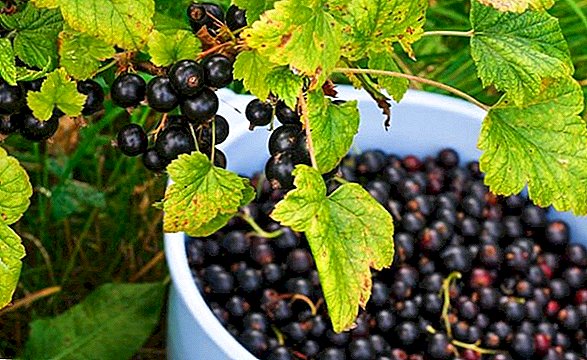
Transportability
In assessing the transportability of the variety on a 5-point scale, "Dachnitsa" deserves 4,2. This currant did not receive the maximum rating due to the fact that for the safe transportation of berries over long distances it is necessary to guess its maturity. Overripe fruit, unfortunately, burst, and it is meaningless to transport them.
Use
This currant has high taste and great for dining. Fresh berries are very sweet and will successfully replace any high-calorie dessert in the summer. Also from the fruit of "Dachnitsa" you can cook excellent jams, marmalade, marshmallow and marmalade. It is good to prepare juices, fruit drinks, compotes, syrups, liqueurs and tinctures from fragrant and juicy berries; you can simply grind them with sugar or freeze them.
Familiarize yourself with black currant preparation recipes: currants ground with sugar, jam, five-minute jam, tincture of vodka, moonshine and alcohol, wine.
How to choose seedlings when buying
Planting material is always recommended to buy from trusted vendors or in specialized nurseries. Experienced gardeners advise to give preference 2 year old seedlings: this is due to the fact that the plants at this age will quickly take root, and you will not have to wait too long for the fruiting shrubs.  The root system requires a detailed inspection before buying a young bush: it should consist of 2-4 lignified roots of reddish-brown color of 15-20 cm, and also have a lot of thin, thread-like, lighter roots.
The root system requires a detailed inspection before buying a young bush: it should consist of 2-4 lignified roots of reddish-brown color of 15-20 cm, and also have a lot of thin, thread-like, lighter roots.
Important! In no case get the seedlings, the root system of which is painted in a dirty-brown, dark color. This color indicates that the young shrub is either frozen, dried up too much, or affected by a disease or pest.
A seedling can have 1 or 2 shoots, the length of which should be between 30-40 cm. The bark of a healthy plant should be monochromatic and shiny.
Growing conditions
First of all, you should decide on the place where the shrub will grow: it should certainly be well lit and sunny. For comfortable growth of the currant variety "Dachnitsa" allowed only light shading. A prerequisite is the absence of wind and drafts on the site.
It is best to plant light, loose, slightly acid and fertile soil. In this case, the soil may be poor, but in this case, preparation for planting with the introduction of organic dressings, such as humus and compost, is required. The proximity of groundwater is undesirable. 
Time and landing scheme
Experts recommend planting currants in late September. This time is considered optimal, since the seedling will have time to take root and adapt to the new terrain before the cold weather.
Read also about the methods of reproduction of black currant and planting technology in the fall.
The holes for planting should be 50x50 cm and 30-40 cm deep. The distance between the bushes should be at least 1.5 m. The same distance should be maintained between the rows. At the bottom of the landing fossa lay out a thin layer of humus or compost, 1 tsp. superphosphate and a little wood ash, and then sprinkled with black earth. After that, the seedlings are placed in the wells, watered abundantly and mulch the soil around them, and the shoots are cut so that 2-3 buds are left.
Video: an example of planting currant seedlings
Basics of seasonal care
Further favorable cultivation of black currants "Dachnitsa" is in compliance with simple rules, namely to ensure proper care. What, how and when you need to do - let's look in more detail.
Learn more about seasonal currant care: in spring, autumn, preparation for winter.
Watering
Water treatments are mandatory for young plants - their water as the top layer of soil dries out. Although watering is also important for older bushes, especially during the period of ovaries and fruiting. The lack of moisture can adversely affect the size and taste of the fruit. Therefore, as soon as you notice that the ground around the bush is dry, you should water the plant with 1.5-2 buckets of water. And if the air temperature is too high, it will be good to spray the bushes out of the spray gun. 
Soil care
Such simple and mandatory procedures, such as loosening the soil, weeding from weeds and the introduction of mulch, should be carried out regularly and for the "Gardeners" bushes. Culture does not tolerate neighborhoods with weeds, and the soil around it should always be light, so its need to loosen often. In order to better retain moisture in the plant's root system, it is recommended to mulch the ground around the bush with humus.
Top dressing
Once a season, namely in the spring, it is necessary to make nitrogenous fertilizers. This can be urea or ammonium nitrate in the amount of 50 g of substance for each bush.
Did you know? Not only berries are useful, but also blackcurrant leaves. Tea from the dried or fresh foliage of this shrub helps to get rid of cholesterol, clean the blood vessels and enhance brain activity. This drink is very useful for both adults and children.
Pruning
Shrub pruned immediately after planting and form within the first 5 years. In the spring, almost all of the old shoots are cut off, leaving only the strongest and healthiest, and the young do not touch. Due to this, the bush consists of strong shoots of different ages.  For plants older than 5 years, spend every spring sanitary pruning - remove damaged, dry and frozen branches.
For plants older than 5 years, spend every spring sanitary pruning - remove damaged, dry and frozen branches.
Learn how to properly trim the currants.
Winter cold protection
The variety "Dachnitsa" refers to cold-resistant, but young bushes is still desirable protect from severe frosts. To do this, in the late autumn, it is necessary to mulch the ground around the bush with sawdust, leaves, needles or humus to avoid hypothermia of the root system. If frosty and little snowy winter is expected, then it is worth covering the bush itself: a lapnik, polyethylene or cardboard will do for this.
Did you know? Currant bushes can be found in almost all corners of our planet, with the exception of only 2 continents - Antarctica and Australia.
The advantages and disadvantages of the variety
Let's look at the main advantages varieties of black currant "Dachnitsa":
- Delicious sweet berries that can be used fresh and used for blanks.
- Large fruit sizes.
- Resistance to diseases and pests.
- Decorative shrub.
- Cold resistance.
- Stable yield.
- Early ripeness.
 TO cons This variety can include the following:
TO cons This variety can include the following:- small height of a bush;
- with a bountiful harvest, the branches bend, unable to withstand the overload;
- requires the formation of a young bush the first 5 years after planting;
- If you miss the moment and do not collect the fruits in time, they are showered on the ground.
Now you know that black currant variety "Dachnitsa" has many advantages: it is relatively unpretentious in the care and stably fruits, and its berries are of high taste and versatile to use. Proof of this are the many positive reviews of gardeners, who managed to appreciate this variety.


